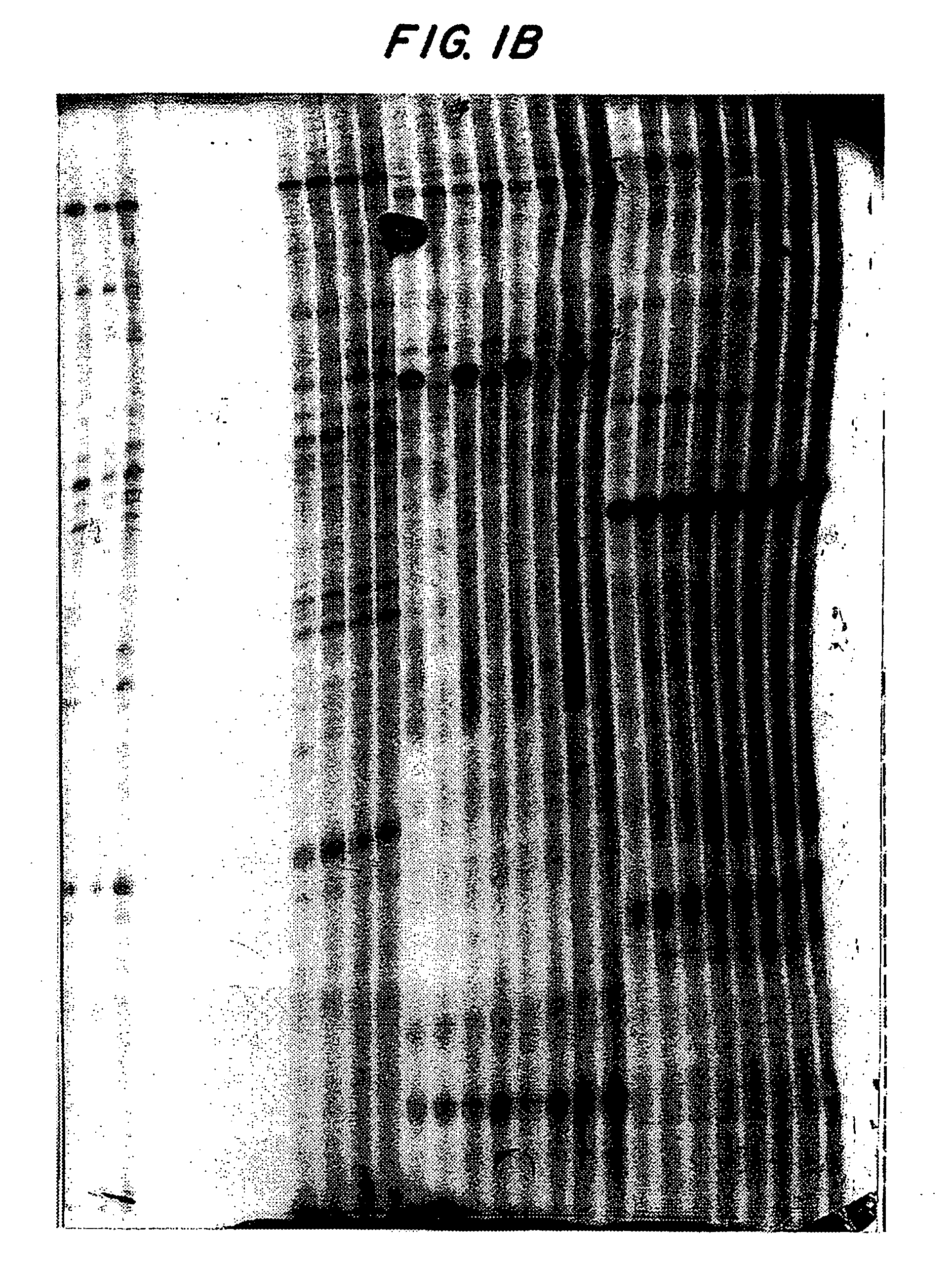Process to study changes in gene expression in T lymphocytes
a technology of t lymphocytes and gene expression, which is applied in the field of process to study changes in gene expression in t lymphocytes, can solve the problems that differential gene expression techniques have not been exploited to identify therapeutic or prophylactic agents, and achieve the effect of maximizing the practical value of the data contained
- Summary
- Abstract
- Description
- Claims
- Application Information
AI Technical Summary
Benefits of technology
Problems solved by technology
Method used
Image
Examples
specific embodiments
Example 1
Production of Gene Expression Profiles Generated from cDNAs Made with RNA Isolated from Quiescent T Lymphocytes (Jurkat Lymphocytes) and Activated T Lymphocytes
[0107] Expression profiles of RNA expression levels from Jurkat lymphocytes exposed to activating agents, such as 12-O-tetradecanoylphorbol-13-acetate (TPA) and phytohemagglutinin (PHA), offer a powerful means of identifying genes that are specifically regulated during T lymphocyte activation.
Culturing of Jurkat Lymphocytes and Treatment with an Activating Agent
[0108] Jurkat lymphocytes (Jurkat clone E6-1; ATCC Accession No. TIB 152) were grown in 6×100 ml RPMI culture media supplemented with 10% fetal bovine serum (FBS), penicillin, streptomycin and glutamine. The Jurkat lymphocytes were pelleted in 450 ml RPMI media supplemented with penicillin, streptomycin and glutamine only and were incubated for approximately 24 hours. After 24 hours, FBS was added to a final concentration of 10%. The flasks of Jurkat lymp...
example 2
Production of Gene Expression Profiles Generated from cDNAs Made with RNA Isolated from T Lymphocytes Exposed to Staphylococci or Streptococci
[0118] Expression profiles from T lymphocytes (Jurkat lymphocytes) exposed to virulent and avirulent Staphylococcus aureus and Streptococcus would allow the identification of T lymphocyte genes that are specifically regulated in response to bacterial infection by these organisms, as well as in response to the superantigens, the bacterialenterotoxins, they contain.
[0119] T lymphocytes are cultured as described above in Example 1. The cells are then exposed to either Staphylococci or Streptococci or the enterotoxins therefrom. When exposing the T lymphocytes to an enterotoxin, the T cells can be directly exposed by the addition of enterotoxin to the culture medium or by addition of bacterial cells to the culture medium. Before incubation, bacteria are harvested and washed in phosphate buffered saline. T lymphocytes are then incubated with the ...
example 3
Production of Gene Expression Profiles Generated from cDNAs Made with RNA Isolated from Human T Lymphocytes Exposed to Ionomycin and sn-1,2-dioctanoylglycerol
[0122] Human T lymphocytes were isolated using the method of Subramaniam et al., (1988) Cell. Immunol. 116: 439-449. The cells were treated with ionomycin and sn-1,2-dioctanoylglycerol (diC8) in the same media conditions as described in Example 1. The concentrations of ionomycine and diC8 used to activated the human T lymphocytes were as described in Subramaniam et al.
[0123] After incubation, RNA was extracted from the treated and untreated human T lymphocytes, and gene expression profiles prepared as described in Example 1. FIG. 2A is an autoradiogram of the expression profiles generated from cDNAs made with RNA isolated from control (untreated) Jurkat lymphocytes and human T lymphocytes incubated with ionomycin and diC8.
[0124] As exhibited by FIGS. 2A-2B, the expression of mRNA species in human T lymphocytes exposed to ion...
PUM
| Property | Measurement | Unit |
|---|---|---|
| temperature | aaaaa | aaaaa |
| temperature | aaaaa | aaaaa |
| temperature | aaaaa | aaaaa |
Abstract
Description
Claims
Application Information
 Login to View More
Login to View More - R&D
- Intellectual Property
- Life Sciences
- Materials
- Tech Scout
- Unparalleled Data Quality
- Higher Quality Content
- 60% Fewer Hallucinations
Browse by: Latest US Patents, China's latest patents, Technical Efficacy Thesaurus, Application Domain, Technology Topic, Popular Technical Reports.
© 2025 PatSnap. All rights reserved.Legal|Privacy policy|Modern Slavery Act Transparency Statement|Sitemap|About US| Contact US: help@patsnap.com



